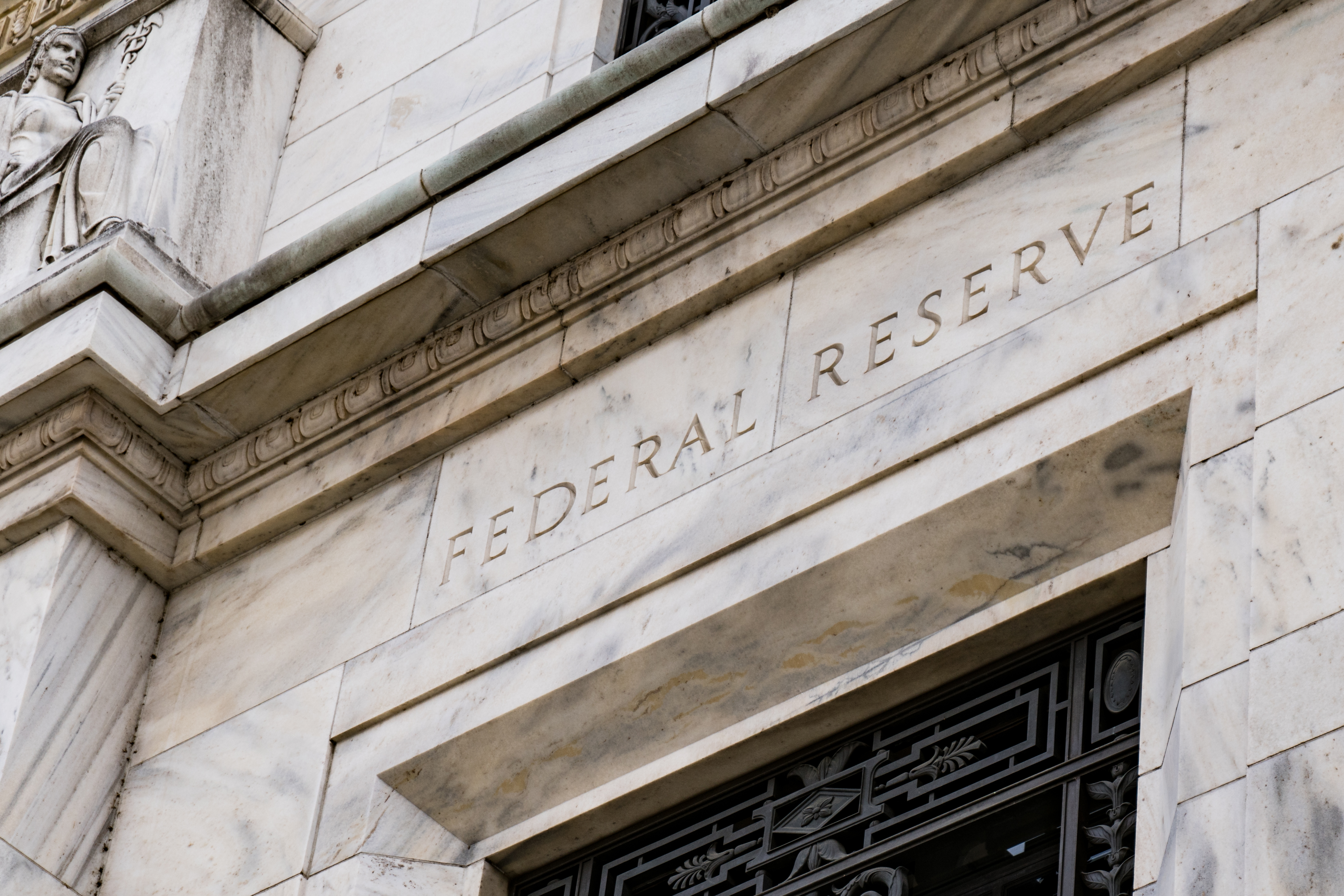After our previous update focused on the causes behind a major bout of volatility, it is pleasing to be able to use this update to explain the reasons behind a recent burst of positivity that caused markets to surge upwards.
The main cause of the rally was the eagerly awaited decision by the US Federal Reserve (Fed) to cut interest rates. Having held rates at 5.5% for over a year, market watchers had long debated when the Fed would begin to bring rates back down to a more normal level and ahead of the latest rate setting committee meeting there was widespread agreement that the time had come.
The only question that remained was how big a move it would make, with most people pricing in a cut of 0.25%, the standard size chunk by which these changes are usually made. However, when the first cut in over four years was announced, it transpired that the Fed had opted for a reduction of 0.5%.
US Federal Reserve interest rates since over the last 20 years

Source: Federal Reserve via Trading Economics
Changes of this size are usually reserved for periods of heightened tension, usually when the immediate outlook is looking concerning, but commentators were split on whether this was the case on this occasion. Markets were much less ambivalent; the main US indices rose above their previous record high levels with the Dow Jones breaching 42,000 for the first time.
For his part, the chair of the Fed, Jerome Powell, said that he was pleased that his colleagues were able to make a “strong start” to what is anticipated to be the start of a series of cuts with around another 0.5% expected this year. The main motivation behind the higher-than-usual decrease is a confidence that inflation has been brought under control. The Fed’s preferred measure of price rises hit 2.2% in August, down from 2.5% in July. This was lower than forecast and is the lowest level since the start of 2021.
The Fed’s ability to keep interest rates as high as they have been and to cut them before key economic indicators started flashing red has been interpreted as a sign that the US will avoid the hard landing that often accompanies periods of high rates. The contrary viewpoint is that concerns about how quickly wages are cooling, geopolitical instability or the upcoming American election were more pressing than some are observers are prepared to admit. Or perhaps the Fed felt the need to act quickly because it was behind its peers in Europe and the UK and it didn’t want the US economy to miss out on the usual boost that comes from lowering borrowing costs.
As with most things in the world of investments, it will take some time to see if the strategy pays off. The same could be said for another announcement that helped boost regional markets – China’s decision to launch a wide-ranging package of stimulus measures. A number of elements were touted, including their own 0.5% interest rate cut, but most of the focus was on the $114bn lending pool designed to boost the equity market.
Chinese markets have endured a torrid time of late with consumer sentiment battered by a seemingly endless set of crises in the property market and an economic growth target that looks increasingly unachievable. The intervention helped the main Chinese index to record its biggest gain since July 2020 and the best week for over a decade, although there is some doubt that the measures will actually address the key challenges facing their economy. There is a suggestion that they are keeping some stimulus back until the result of the US election is known. As above, this is likely to be a key theme into November and beyond.
Chinese market recovery

Source: LSEG via Reuters. Year-to-date performance rebased to 0
The impact on UK markets from all of the above has been muted largely because of concerns about the health of our own economy. Despite an initial strong reaction to the Fed’s cut, the rally petered out as investors absorbed more domestic factors. Economic growth for the second quarter of the year was revised down to 0.5% while inflation rose for the second month in a row in August, hitting 2.2%. This is obviously some way below the high point seen two years ago, but the US and Europe are making more headway suggesting that the Bank of England has further work to do.
As we enter the final month of the quarter we find ourselves yet again thinking about the potential impact of geopolitical events. Clearly the situation in the middle east is a concern for all sorts of reasons, but for us it might be limited to the impact on oil prices, or it could exacerbate recent volatility if the conflict widens. The upcoming US election is potentially more impactful from our perspective and our next review will be close to completion as the results start to come in.
Regular readers of these updates will know that we don’t let events dictate our investment approach, especially when the outcome is so binary, so the review will go ahead as scheduled. There is likely to be an immediate reaction to whichever of Harris or Trump wins in November, but history tells us that there’s a good chance this will misinterpret the situation as so many unknowns would remain. We’ve learnt that it is better to wait for the picture to become more clear before drawing any conclusions, especially as we manage the portfolios with a long-term mindset.
Market and sector summary to the end of September 2024

Source: Financial Express Analytics.
Past performance is not a guide to future performance, nor a reliable indicator of future results or performance.

